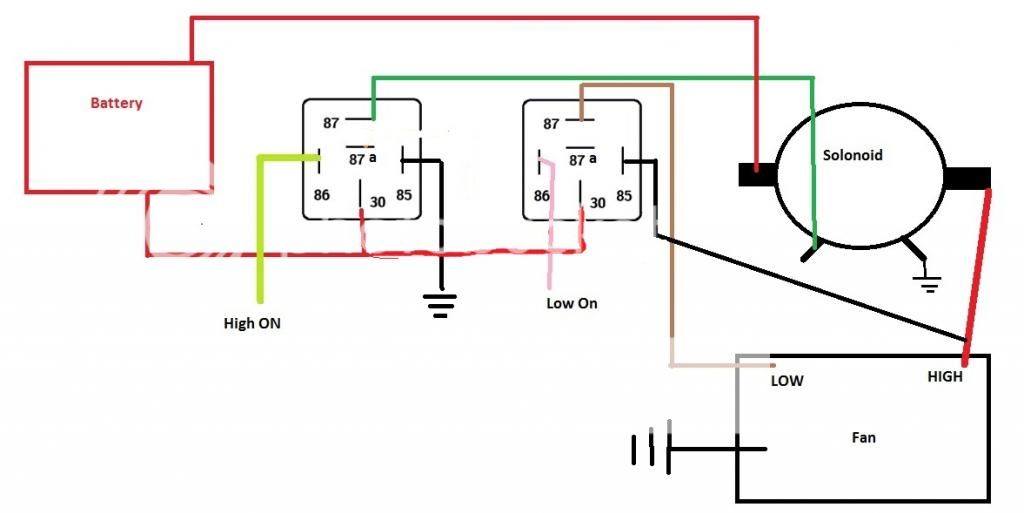Taurus fan is a 2speed fan
I need to deactivate lowspeed when highspeed is activated. I've looked at quite a few diagrams for it and have seen mixed/ bad wiring. One thing I do not want is my 140amp spiking high power coming from a 40 amp relay.
Materials:
Low temp- Hayden adjustable
High temp - Stock Aux
150 amp Solonoid
2x 40 amp 5pin bosch relays
Fire extinguisher
So I've got this, I'm not happy about the 40amp being the power source for low but that's why I'm posting. Any better ways to do this?

I need to deactivate lowspeed when highspeed is activated. I've looked at quite a few diagrams for it and have seen mixed/ bad wiring. One thing I do not want is my 140amp spiking high power coming from a 40 amp relay.
Materials:
Low temp- Hayden adjustable
High temp - Stock Aux
150 amp Solonoid
2x 40 amp 5pin bosch relays
Fire extinguisher
So I've got this, I'm not happy about the 40amp being the power source for low but that's why I'm posting. Any better ways to do this?



